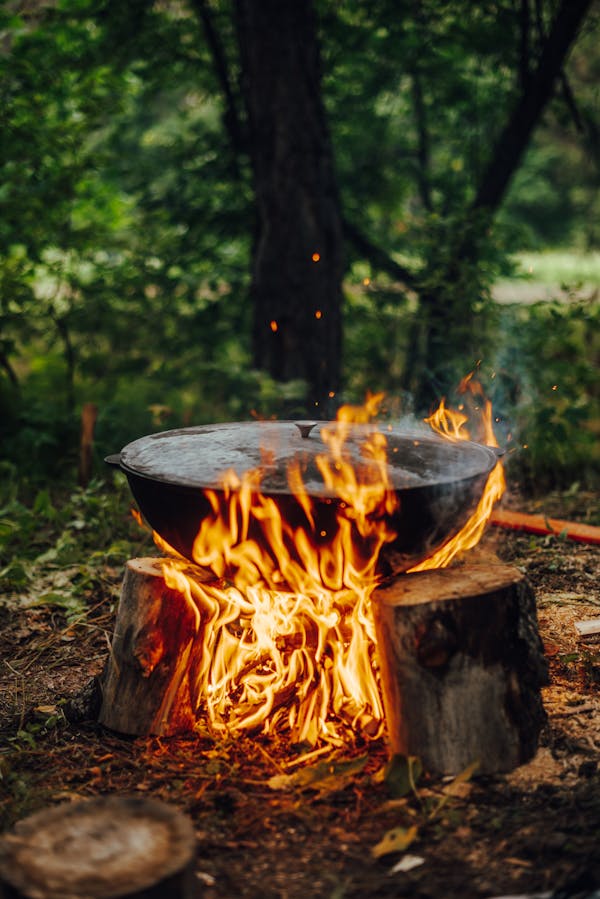Nature’s Classroom: The Benefits of Learning Bushcraft Skills
Bushcraft is the practice of living sustainably and self-reliantly in the wilderness. It fosters a greater awareness of one’s environment, and provides opportunities to connect with nature.
Unlike survival situations, bushcraft trips are planned ahead of time to ensure that basic needs are met. It also requires knowing what skills are essential and which are beneficial, but not critical to survival.
Survival Skills
The skills necessary for survival in a wilderness environment are at the core of Bushcraft. These include building a shelter, cooking food, finding and gathering water and natural materials, and navigation.
For example, learning how to make a primitive bow and arrow is important to hunting for game in the wilderness. Making a fire is also essential, as it provides warmth, light, and protection from predators.
Another essential skill is creating and maintaining clean drinking water. While it may seem difficult to do in the wild, there are several methods for sourcing and purifying water, such as a comfrey poultice or a survival filter.
Finally, it is important to have navigation skills, like using a compass and reading a map. Having these skills will help you find your way back to camp or avoid getting lost in the woods. Check out Foraging course in Dorset for more information.
Shelter Building
Creating a safe shelter in the wilderness is an essential survival skill. Unlike emergency lean-tos, bushcraft shelters are bigger, sturdier, and can be used for bugging out when SHTF or as a home away from home while camping.

Building a shelter requires careful planning and the right tools. Choosing a location, taking advantage of sunlight and wind direction, using natural debris to improve insulation, and making sure the shelter is watertight are just some of the things that need to be taken into account.
Also, always remember to follow the principles of Leave No Trace. This means only using branches and debris that have fallen naturally or if you must cut down anything, only do so when it can be expected to re-grow quickly.
Food Preparation
Food preparation techniques are necessary to transform raw ingredients into edible and safe dishes. These methods are used in both food manufacturing and cooking operations to ensure that foods are handled properly.
While survivalists are often concerned with preparing for a breakdown of society, bushcrafters and survivalists alike are interested in developing skills that will allow them to thrive in nature. This means knowing what types of plants are edible, how to make a fire from sticks and tinder, and the best way to prepare water for drinking.
Many bushcrafters also bring along 2-3 knives, one chopper for cutting branches and batoning firewood, a medium knife for tinder making and food preparation, and perhaps a neck knife. These knives will need to be able to withstand heavy use and be versatile enough for a variety of purposes.
Navigation
Navigation is a vital skill for bushcrafters as it allows them to explore wilderness areas safely. In the most basic sense, it is knowing how far you have travelled from a known point and in what direction (also know as dead reckoning).
A good map and compass are key to navigating in the outdoors. With these tools and the knowledge of how to read topographical maps, finding your way becomes an exhilarating challenge rather than a daunting task.
Navigation can also be achieved through natural means, such as the sun and stars, reading contour lines, following a bearing and recognising key landscape features. These types of techniques can be a lot more fun and interesting than simply using your GPS device which is likely to let you down when it matters most!
Shelter Design
Shelter should be the first thing you tackle in a survival situation as it’ll offer protection from hypothermia – one of the primary threats in a wilderness emergency. A well-built survival shelter will also allow you to get a good night’s sleep and give you the energy to tackle wild-food-gathering activities.
The materials you have available to use for a survival shelter will vary from place to place, and the climate will affect your needs and requirements. It is ideal to build a shelter in an area surrounded by lots of material, but this isn’t always possible. Simulation can be helpful in assessing shelters and matching them to appropriate climates. However, the design of a shelter requires a great deal of experience. Using the wrong type of shelter for an environment can result in overcrowding, uncomfortable indoor temperatures and environmentally damaging coping strategies such as unsustainable wood collection or over-extraction of water resources.
